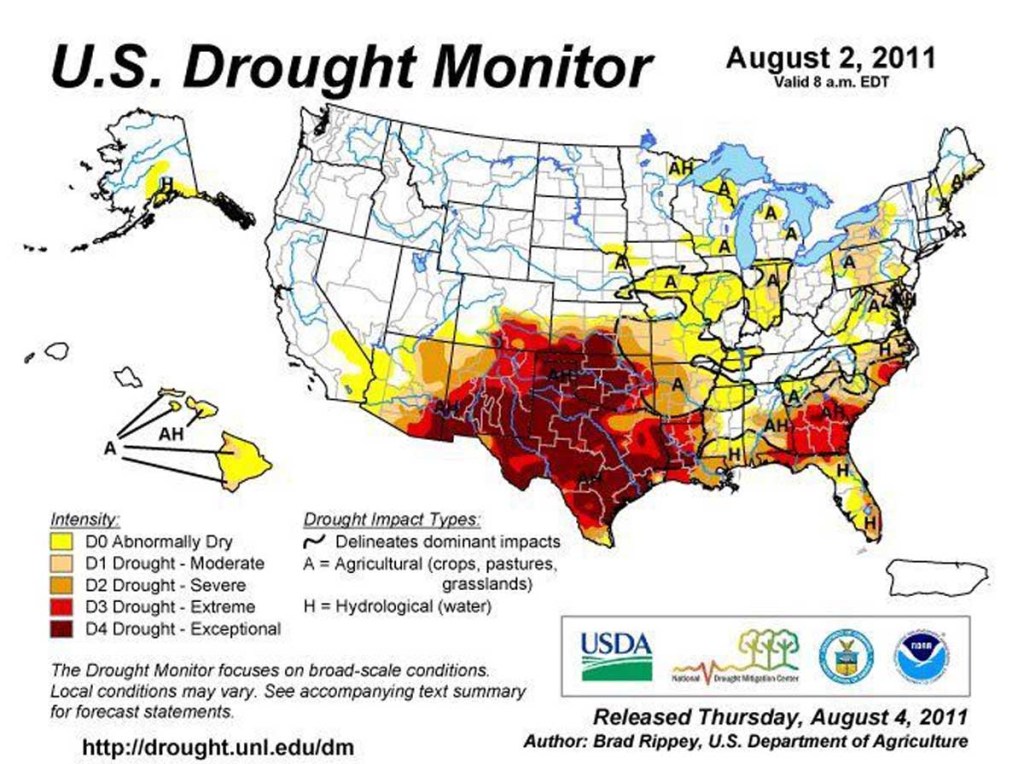How to conserve water during drought
Published 4:00 pm Monday, August 8, 2011

- Several states are facing extreme to exceptional drought conditions, according to the U.S. Drought Monitor map produced by the U.S. Department of Agriculture.
The average American uses between 100 and 175 gallons of water a day at home, according to water.org. With the ongoing drought in several states expected to persist into 2012, it is more important than ever to use water efficiently. You can do your part by following these steps to conserve water both indoors and outdoors.
Great outdoors. According to the Texas Water Development Board, one inch of water per week in the summer will keep most grasses healthy. An easy way to determine how long you should run your sprinklers is by placing cans at different distances away from the sprinkler; you can time how long it takes to fill an average of one inch of water in each can. Keep in mind that the best time to water your lawn is in the early morning or late into the evening in order to avoid the quick evaporation of water in the heat. You can also cut your grass less frequently as taller grass holds moisture better.
Recycle rain. If you’re lucky enough to be living somewhere that is still experiencing rainfall, consider setting up a barrel to collect the rain from your gutters and reuse it to water your indoor or outdoor plants. Also, try to plant native or heat-tolerant plants that will be able to withstand an extended amount of time without water.
Never let the water run. It is estimated that leaky faucets and toilets can waste thousands of gallons of water a month and are quite inexpensive to fix. When you’re brushing your teeth or shaving, be sure to turn the water off until it is time to rinse. Simple changes such as these can make a big difference in water savings.
Running on empty. Make sure to only run your washing machine and dishwasher when they are completely full. Installing high-efficiency appliances is also beneficial. The Oklahoma Water Resource Board also encourages you to adapt your plumbing with flow-restricting or other water saving devices.
Squeaky clean. It may be one of the most challenging aspects of your routine to change, but shortening the length of your showers can greatly improve the amount of water you use on a daily basis. It may be surprising to some, but taking a shorter shower will most often use less water than it would if you had a bath. If you have no option but to use the tub, try reducing the level of water by one or two inches.
Information from wateriq.org and water.org.





